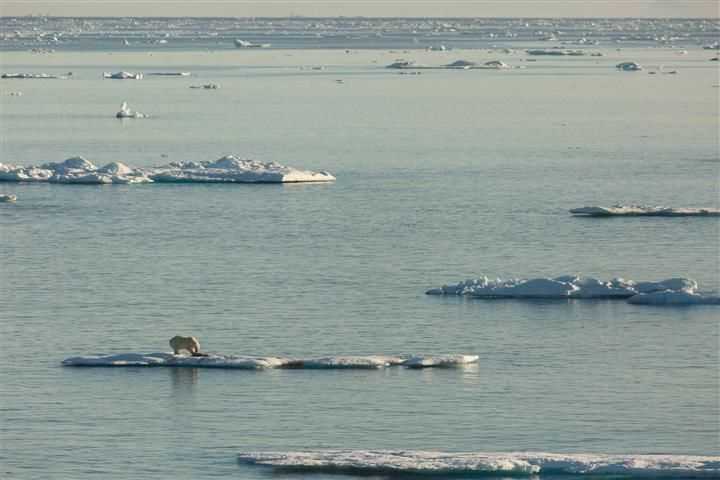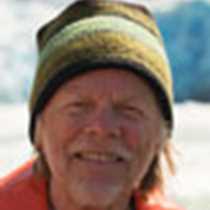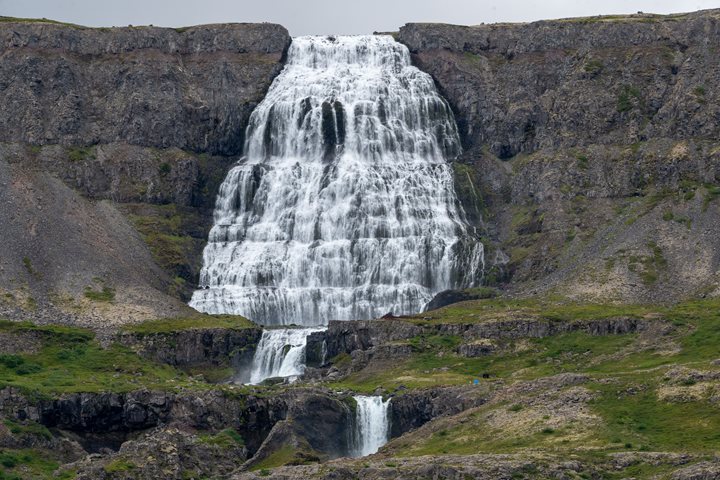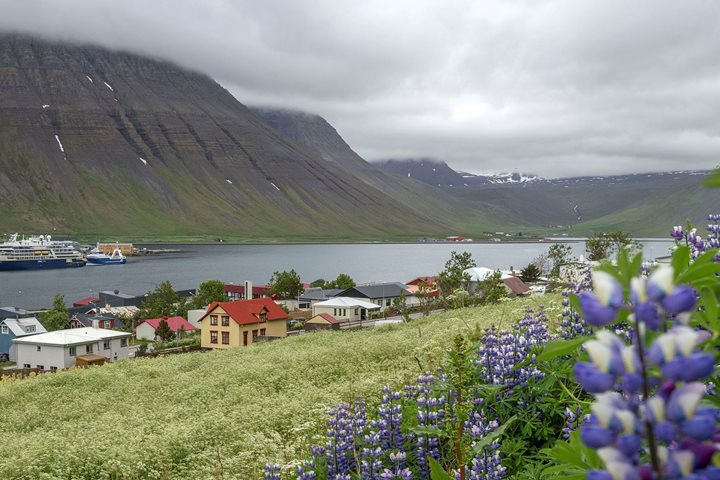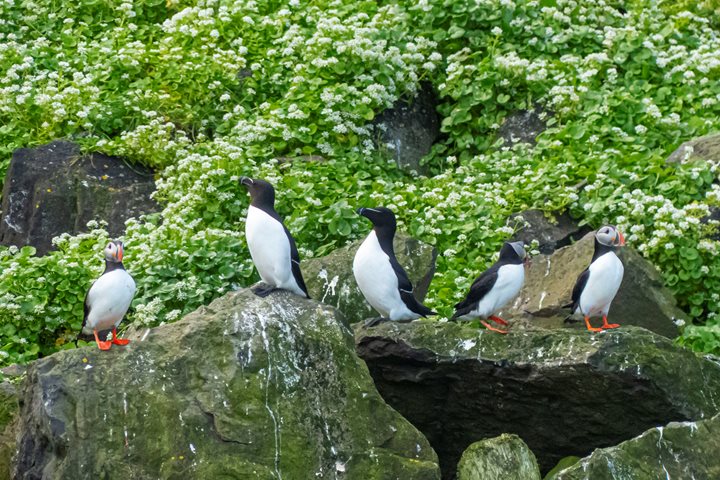Shortly after 10:00 yesterday evening, as we traveled south from Nanson Fjord, and just when most of us were preparing for bed, a soft voice called over the speakers: “We have a bear on the ice ahead.” All thoughts of sleep were instantly dismissed, and we quietly made our way to the deck for observations and photos. The bear was quite far in the distance, but National Geographic Explorer slowly, quietly, and steadily inched forward.
It soon became apparent that the bear was consuming a fresh-killed seal. In utter silence, we advanced to a position that did not disturb the bear yet afforded a unique opportunity for all to observe the undisputed Arctic icon bathed in the late-night light of Arctic summer.
After that magical experience, we awoke this morning to beautiful, clear weather in Kangerdlugssuaq Fjord. The fjord was dotted with variably sized and shaped pieces of glacier ice (officially 4-5/10 coverage), but very little sea ice. Maneuvering National Geographic Explorer though the maze of ice required a high level of training and experience, which the captains have in abundance and which became even more necessary when dense fog arrived abruptly.
Advection fog forms as warm, relatively moist air moves over cold ground, such as a glacier. The warm air is cooled to saturation by the cold ground, releasing water vapor and creating fog. Coastal fog in Greenland appears between 15 and 25 percent of days throughout the month of July.
The fog required us to proceed at a jellyfish’s pace and often necessitated stopping and holding ground. By mid-morning, we were forced to leave Kangerdlugssauq for Ryberg Fjord, halfway back to Nanson Fjord. We were constantly teased by brief periods of sun. Being grounded by fog, however, allowed us to attend presentations on polar bears and sea ice.

